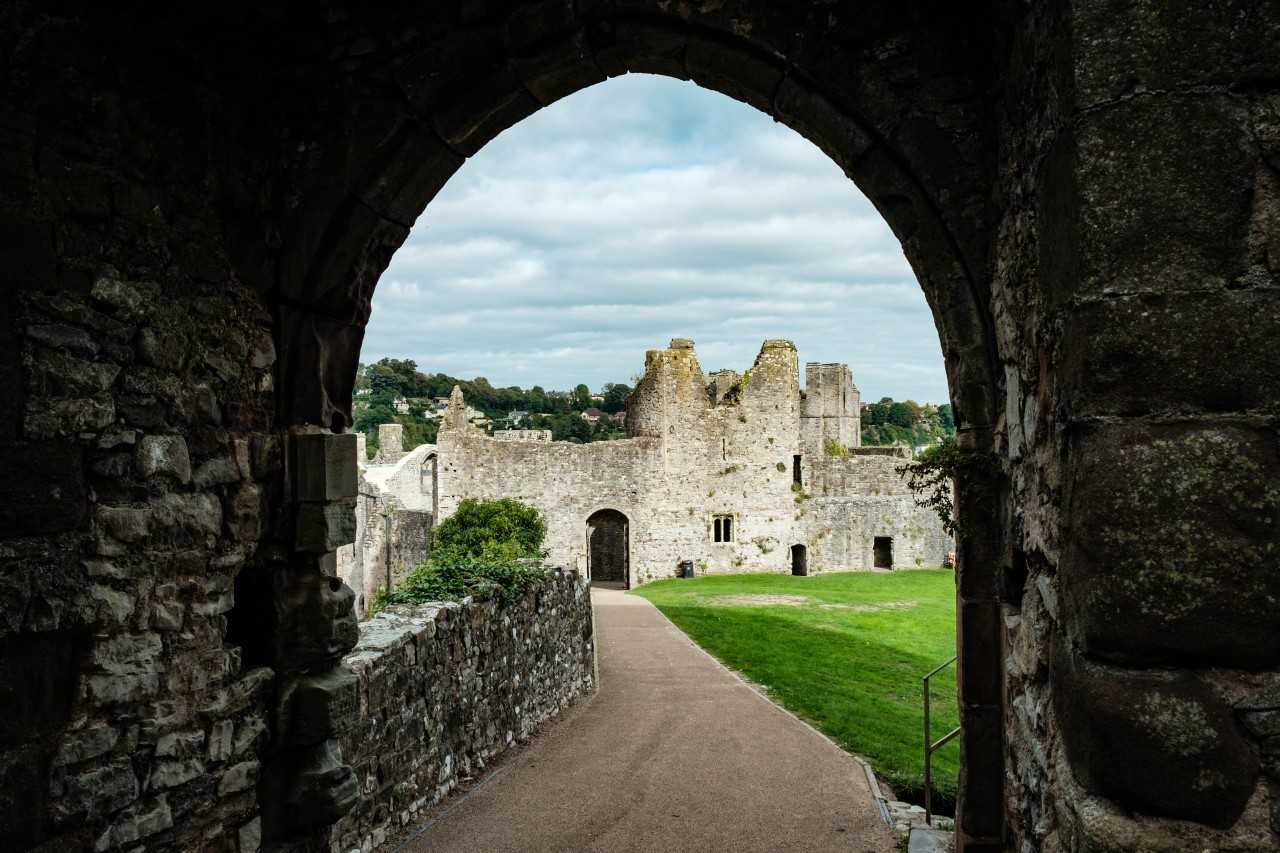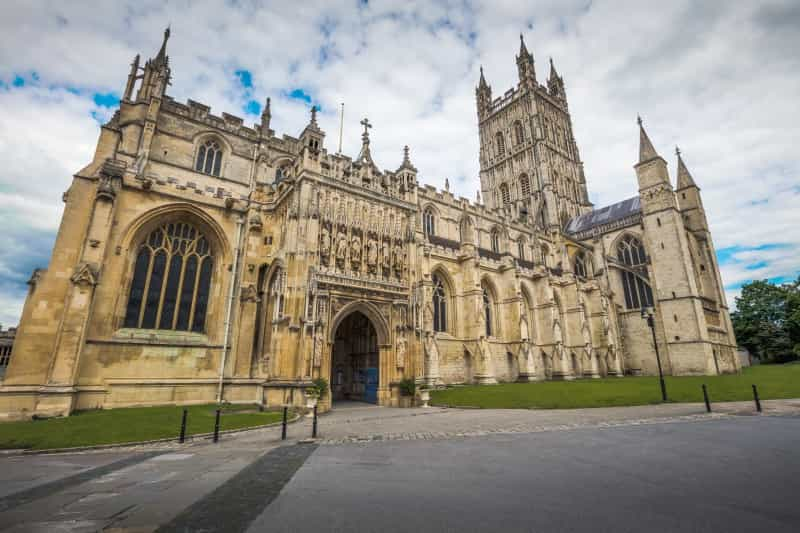5 Gloucestershire Castles
Fancy a day out exploring a castle in Gloucestershire? It's a good plan – there are some very well-preserved and captivating fortifications to see in the county.
If you like your motte-and-baileys, spend an afternoon learning all about the site of St Briavels. Or perhaps fortified manor houses are more your thing? Then get ready to be fully immersed in the rich and exciting history of Beverston. If you’re not really a history buff, step back in time with a stroll around some atmospheric castle gardens instead. Plus, there are always gift shops to browse and cafés to relax in too.
When planning your visit, remember to check out some awesome campsites nearby so you can really make the most of your time.
Here’s our list of the five best castles to visit in Gloucestershire, where you can frolic in forts and ramble through ruins to your heart’s content...

Berkeley Castle
This castle is on the south-east side of Berkeley, a small town close to the Little Avon river. The surrounding estate covers 6,000 acres of Gloucestershire's Berkeley Vale and includes a medieval deer park, along with a number of farms and two pubs.
The keep (a fortified tower that was built to defend the castle) and sections of its surrounding curtain walls date back to the 12th century. Most of the remainder was added around 200 years later and, in general, very little has changed since the 14th century.
The Berkeley family have called this place home since 1154, making it the third-oldest continuously occupied castle in England (after Windsor Castle and the Tower of London). It was here that the murder of Edward II was committed on 21st September 1327 – his remains are buried in an alabaster tomb at Gloucester Cathedral.
Berkeley Castle is usually open to the public between April and October, from Sunday to Wednesday each week. The ticket price also includes admission to the well-maintained castle gardens. Visitors can admire the tropical plants and butterflies in the butterfly house and stroll along the bowling green where Queen Elizabeth I was once thought to have played bowls.
Depending on when you visit, you can also attend one of the castle’s well-loved falconry displays and learn all about some spectacular birds of prey.

St Briavels Castle
Owned and managed by English Heritage, St Briavels is an impressive moated castle on a hilltop overlooking the River Wye. You can normally visit the inner bailey and courtyard between April and October but keep an eye on the website for updated opening times.
The site was originally a motte-and-bailey fortress, built by Norman lord William Fitz Baderon after he bought the land in 1086. In the 12th century, this was replaced with a square stone keep that was over 100-feet high.
St Briavels was an important royal castle on the frontier of Wales and, over the years, has been the administrative centre of the Forest of Dean and a crossbow bolt factory. Until 1842, it was a debtor’s prison. The surviving buildings were restored in the early 20th century, and today, many thousands of people visit from all over the world.
St Briavels is a brilliant base for lots of local walks too, such as along the Offa's Dyke Path. The views of Tintern Abbey from the Devil's Pulpit are outstanding, and the nearby Forest of Dean is also well worth exploring.
If you want to see some more of the area, take a look at our list of things to do in Gloucestershire.

Chepstow Castle
Chepstow Castle, on the border between England and Wales, is around a 15-minute drive from St Briavels. In 1067, Earl William FitzOsbern, friend of William the Conqueror, started building the castle and it became one of the first Norman strongholds in Wales.
It’s the oldest surviving post-Roman stone fortification in Britain and has been home to some of the most powerful and wealthy men of the medieval and Tudor ages over the last 600 years.
The original mighty castle doors were crafted around the 1190s, making them the oldest in Europe. On display inside the castle, they’re now protected from the elements.
Lots of family-friendly events are hosted here, such as the ‘Living History Weekend’ where visitors can observe what life would have been like more than 900 years ago. You’re also more than welcome to bring four-legged friends – dogs are allowed to access the ground-floor levels of the site as long as they’re on a lead.
The castle and grounds are usually open daily, but double check their website for exact times as it changes depending on the season.
Goodrich Castle
Goodrich Castle was named after Godric, the English landowner who built the first castle here in the 11th century. In the late 13th century, it was rebuilt by the French nobleman William de Valence (the half brother of Henry III).
It’s one of the best-preserved medieval castles in England, and despite being near the Anglo-Welsh border, has had a relatively peaceful existence. Well, until it was besieged and set on fire by Parliamentarians in 1646 that is…
The striking castle ruins have been a popular tourist attraction for hundreds of years and thousands of people from around the world continue to visit. This spot is usually open every day of the week with a range of activities available. From twilight tours and exhibitions to tasty treats at the café, a trip to Goodrich makes for a memorable day out.
Not done enough exploring yet? Try one of the 5 walks in Gloucestershire before you head home.
Sudeley Castle
This 15th-century Grade-I-listed fortification is one of the best Tudor castles in England. It’s in an Area of Outstanding Natural Beauty and has played an important role in the country’s history for over 1,000 years.
Sudeley is also the only private castle in the country to have a queen buried in its grounds – Catherine Parr to be precise, the last wife of King Henry VIII. Visitors can see her tomb at St Mary’s Church next door.
The 1,200-acre estate is home to 10 award-winning castle gardens including the Tithe Barn garden – a romantic pocket of nature with a koi carp pond – and the Tudor Physic garden, which is home to plants used to create medicines during Tudor times.
Sudeley is a lovely location for a day out with the kids – there’s an excellent adventure playground and fort for them to run around, as well as plenty of family-friendly activities and events throughout the year.
The castle is usually open daily until the end of October.
Feeling hungry after all that history? Book yourself a table at one of the best restaurants in Gloucestershire for a delicious dining experience.